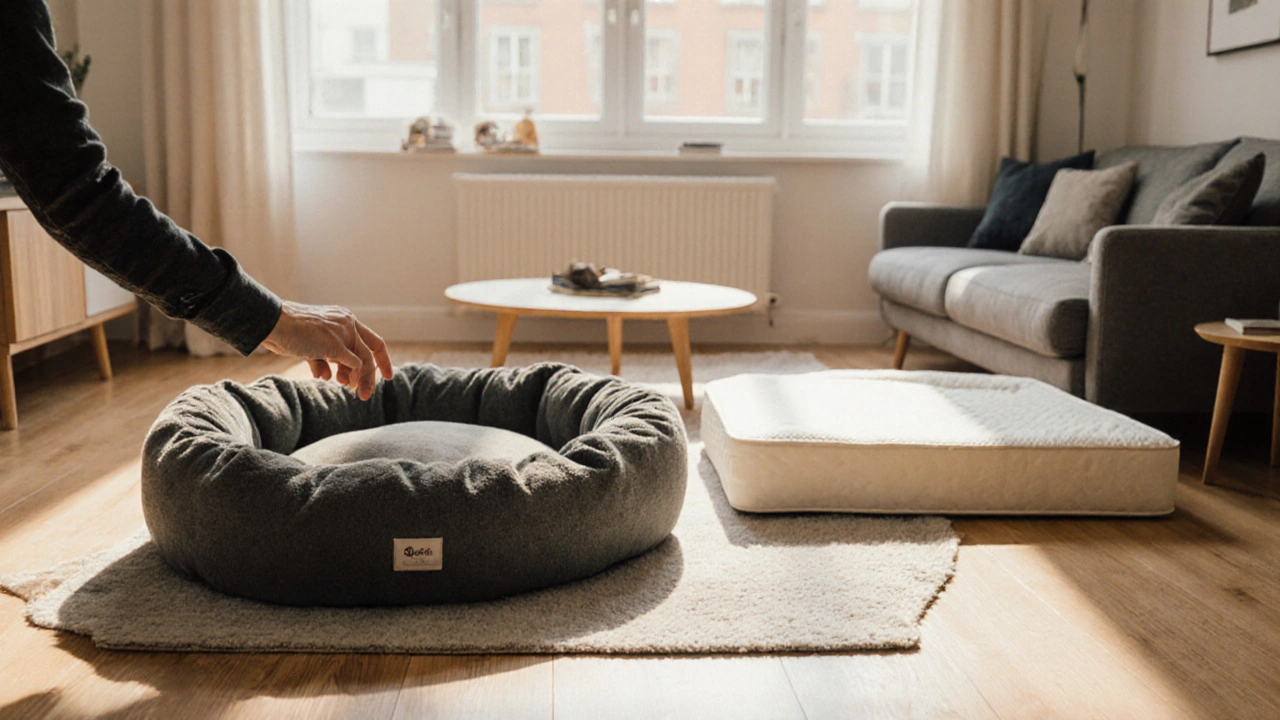Dog Sleep Preference – Understanding How Your Dog Chooses to Rest
When working with Dog Sleep Preference, the set of habits and conditions a dog picks for sleeping. Also known as canine sleep habits, it affects everything from bedding to nighttime safety. Most owners think a dog just lies down wherever it feels comfy, but there’s a whole pattern behind that choice. Your dog’s preferred spot, temperature, and even who it shares a bed with are clues about its comfort level and trust in you.
One big factor that shows up again and again is Dog Collar at Night, whether you keep the collar on while your pup sleeps. Keeping a collar on can protect identification tags, yet it might also cause irritation if the dog moves a lot. The decision intertwines with dog sleep preference because a comfortable collar‑free night can improve rest quality, while a well‑fitted collar ensures safety without disturbing sleep.
Key Factors that Shape Dog Sleep Preference
Another entity that pops up in the conversation is Puppy Sleep, the sleep cycles and needs of young dogs. Puppies need more REM time and frequent bathroom breaks, so their sleep preference often includes a crate or a small, cozy nook. As they grow, the pattern shifts, but the early habit of a secure sleeping spot can stick for life, influencing the adult dog’s bedtime choices.
How you position yourself in the bedroom matters too. Many owners wonder if their dog wants to curl up with the “alpha human.” The idea that dogs pick the leader of the pack for bedtime is a myth, but there’s truth in the bond. When a dog feels safe with you, it’s more likely to choose your bed or a nearby spot, reinforcing a positive sleep environment. This link between Alpha Human, the person a dog sees as the primary caregiver and sleep preference shows how emotional security drives where and how a dog sleeps.
Safety at night rounds out the picture. Dog Sleeping Safety, practices that keep your dog secure while it rests includes checking for drafts, choosing the right bed height, and making sure any night‑time accessories don’t pose a choking hazard. When safety is nailed down, the dog can relax fully, making its sleep preference more consistent.
These five entities—Dog Sleep Preference, Dog Collar at Night, Puppy Sleep, Alpha Human, and Dog Sleeping Safety—interact like a web. For example, a well‑fitted collar (entity 2) supports night‑time safety (entity 5), which boosts the dog’s confidence in its chosen sleeping spot (entity 1). Likewise, a puppy’s early sleep routine (entity 3) sets expectations that the alpha human (entity 4) can reinforce, shaping lifelong sleep habits.
What does this mean for you right now? First, observe where your dog naturally settles. Does it gravitate toward a cool floor, a warm blanket, or the foot of your bed? Next, evaluate the collar: is it snug enough to stay on without digging in? Finally, think about safety—no loose cords, no heavy objects that could fall. Tuning these elements aligns with your dog’s sleep preference and helps both of you enjoy calmer nights.
Below you’ll find a collection of articles that dig deeper into each of these topics. We’ve gathered practical guides on collar safety, puppy sleep routines, bedtime bonding, and more—so you can fine‑tune every aspect of your dog’s nightly routine. Ready to explore? Let’s get into the details that will help your pup rest better and you sleep soundly too.

Round vs Rectangular Dog Beds: Which Shape Your Dog Prefers
Explore how shape influences dog comfort, discover which breeds thrive in round vs rectangular beds, and get a step‑by‑step guide to pick the perfect dog bed.
View more